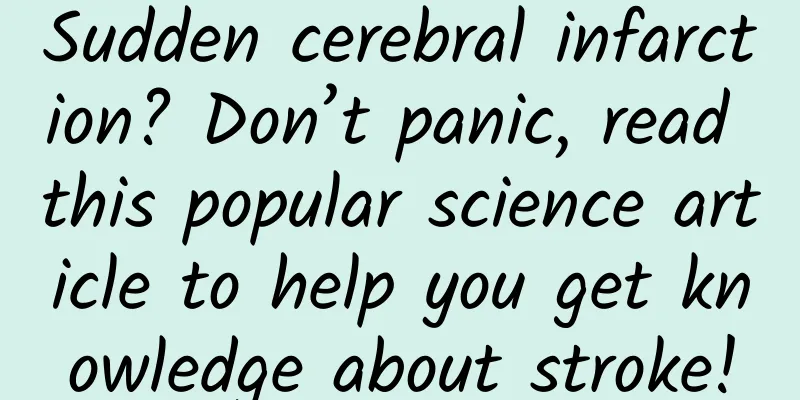Sudden cerebral infarction? Don’t panic, read this popular science article to help you get knowledge about stroke!

|
Stroke sounds like a very stressful disease, but it is actually a disease related to cerebrovascular accident. Simply put, it is a problem with the "pipeline" (blood vessels) that delivers nutrients to the brain, either blocked (ischemic stroke) or leaking (hemorrhagic stroke), causing brain cells to "go on strike" (lose function) because they cannot get "food and grass" (oxygen and nutrients). Even if there is a small problem with this "pipeline", the consequences can be serious! Because the brain controls our words, deeds, actions (actions, feelings, thoughts and behaviors), once it "strikes", it will affect these aspects. There are three main factors that affect the physical and mental state after a stroke: 1. The location of the "pipeline" blockage: "Pipelines" in different locations are responsible for supplying different brain areas, and the location of the blockage determines which functions will be affected. 2. The area and extent of brain cell "strike": the more and more severe the brain tissue on strike, the more serious the sequelae of stroke will be. 3. Type of stroke (ischemic vs. hemorrhagic): Just like a clogged water pipe and a leaking water pipe are two different faults, there are two types of stroke, and the treatments are also different. Ischemic stroke is the most common type, just like a "hair" (blood clot) stuck in a water pipe, blocking the "water flow" (blood), causing brain cells to "lack food" and "go on strike". Hemorrhagic stroke is a problem with the "pipeline" itself, which directly "leaks". The overflowing "water" will press on the surrounding brain cells, causing them to "go on strike" as well. Although this type is relatively rare, it is often more serious because the "leakage" will cause a larger range of "floods" (brain tissue damage). Stroke is no joke. If you notice any signs, you must seek medical attention immediately! The following symptoms are all "alarm signs" of stroke: 1. Sudden weakness in one arm or leg, and inability to exert force 2. Speech is lisp and speech is unclear 3. Sudden paralysis on one side of the face, crooked mouth corner 4. Sudden blurring of vision or even loss of vision 5. Severe headaches (but not all stroke patients will have headaches) 6. Dizziness (feeling dizzy) If you experience these symptoms, don't delay and call the emergency number immediately! Early detection and early treatment can greatly reduce the incidence of stroke sequelae and prevent the quality of life from being greatly affected. In order to stay away from stroke, we should also pay attention to taking good care of ourselves ! 1. Maintain a healthy lifestyle: exercise more, eat well, quit smoking and limit alcohol. 2. Check your body regularly and control your blood pressure, blood sugar and cholesterol. 3. If there is underlying vascular disease, active treatment should be sought. Remember, if you feel anything wrong with your body, seek medical attention immediately! |
Recommend
Obvious bleeding after exercise during ovulation
The ovulation period is generally fourteen days a...
Hysterectomy reexamination several times
The uterus is an important part of our female rep...
Women sweating coldly when sleeping at night
The extreme temperature environment in winter has...
What causes lumps in women's breasts?
In recent years, the health of women's breast...
How many years can you live with breast cancer?
Almost all radiotherapy is accompanied by adverse...
Why do girls have bruises on their legs?
Some girls may get bruises on their legs very eas...
What foods should women eat for daily health care
With the development of economy and the improveme...
How women can stay young
Some people say that women who know how to sleep ...
Can pregnant women eat lettuce?
Lettuce is a very common vegetable in our lives. ...
How often is it best to eat barbecue? What is the recipe for barbecue marinade?
The cultural attribute of barbecue is the rebelli...
How to get rid of lice on the head? Why do lice appear? What is the difference between lice and fleas?
Lice are parasites that often live on animal fur ...









